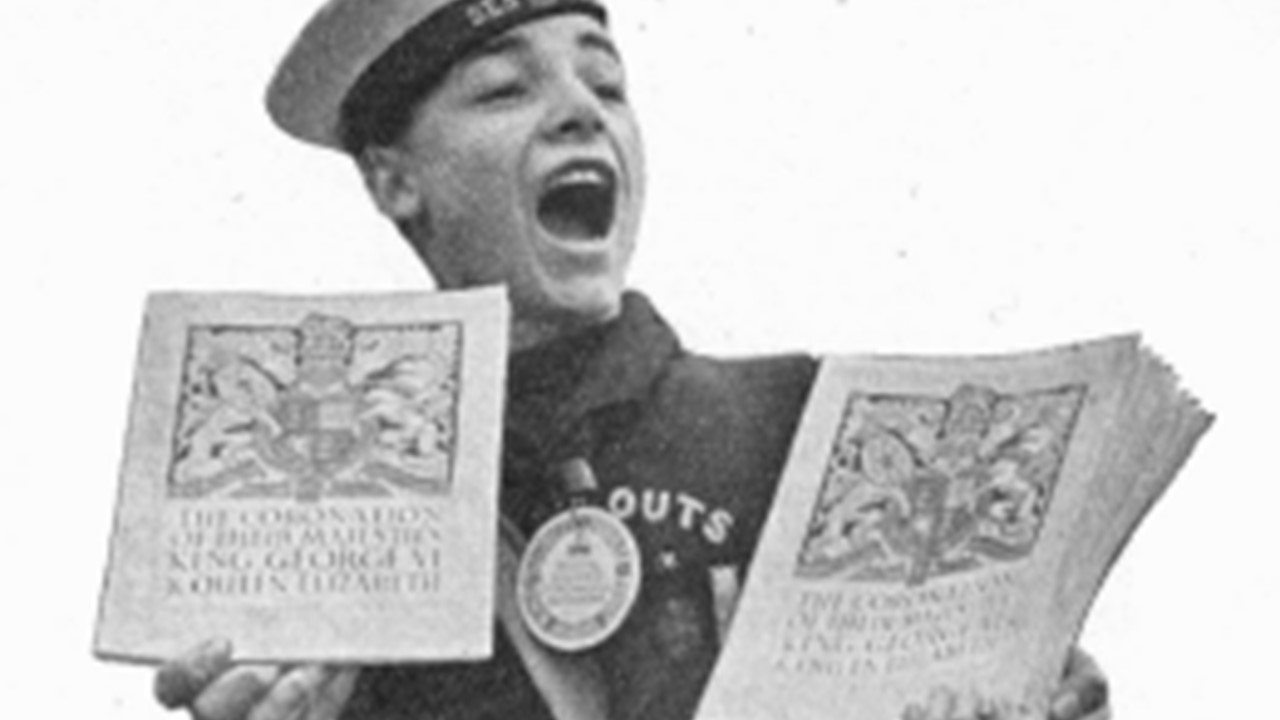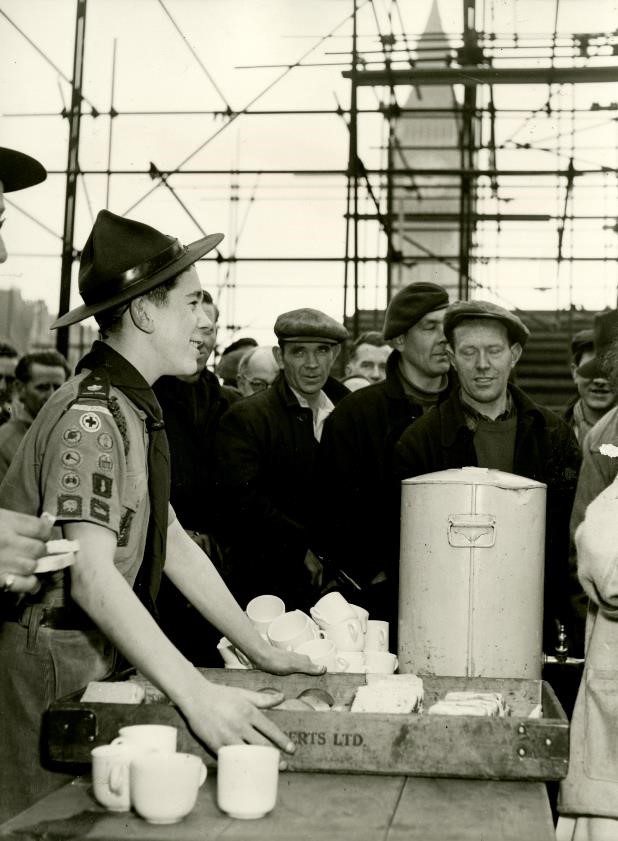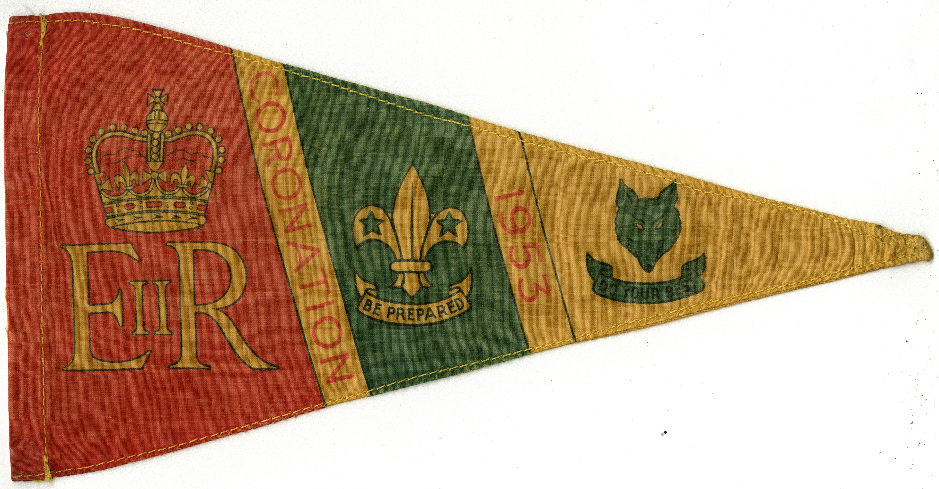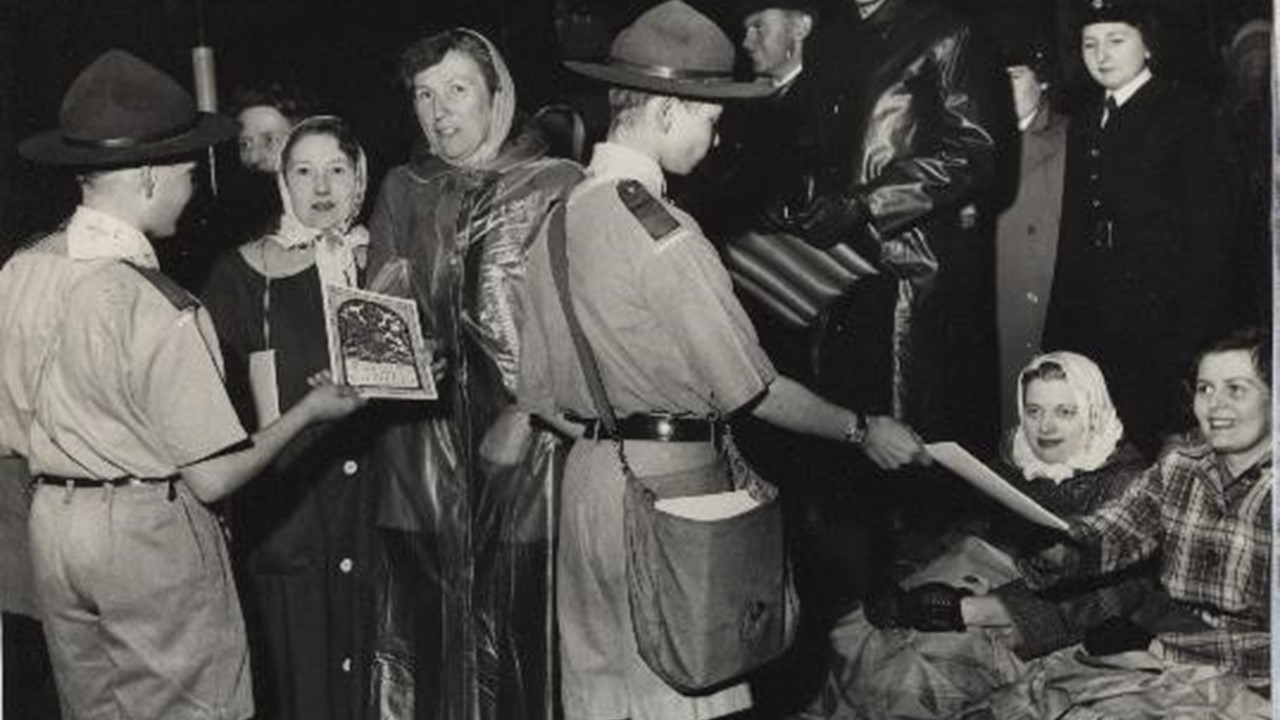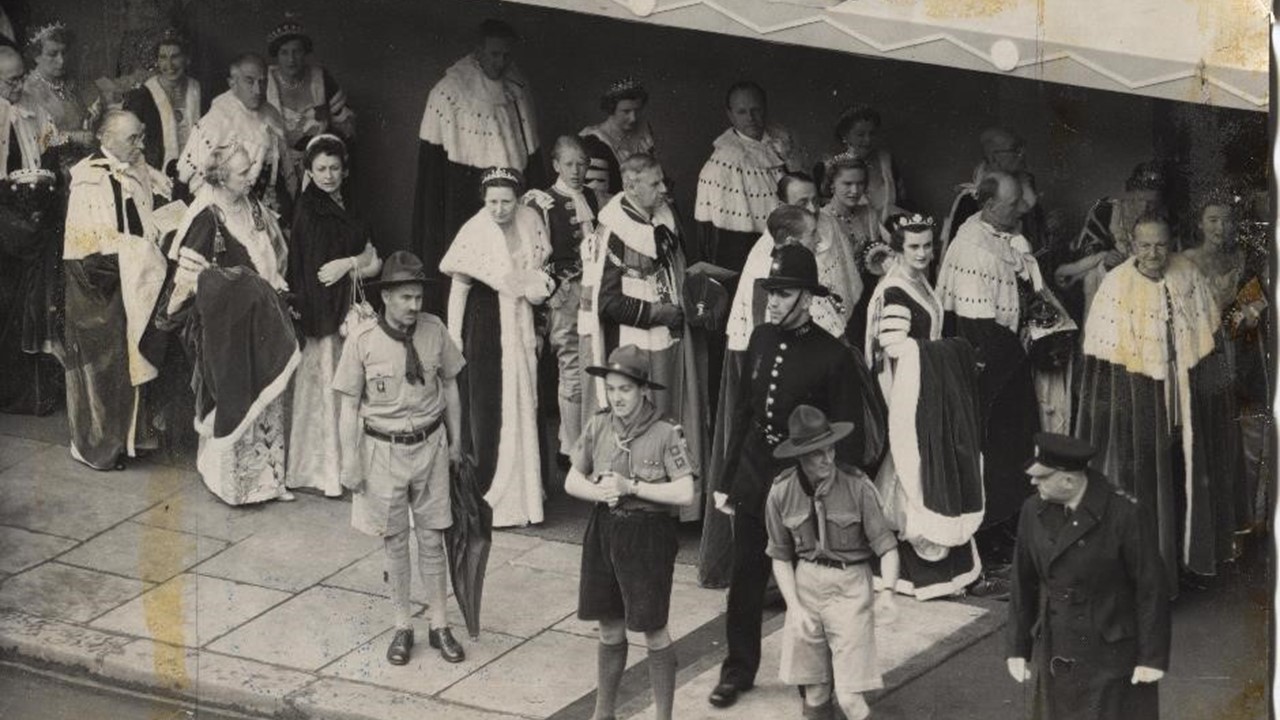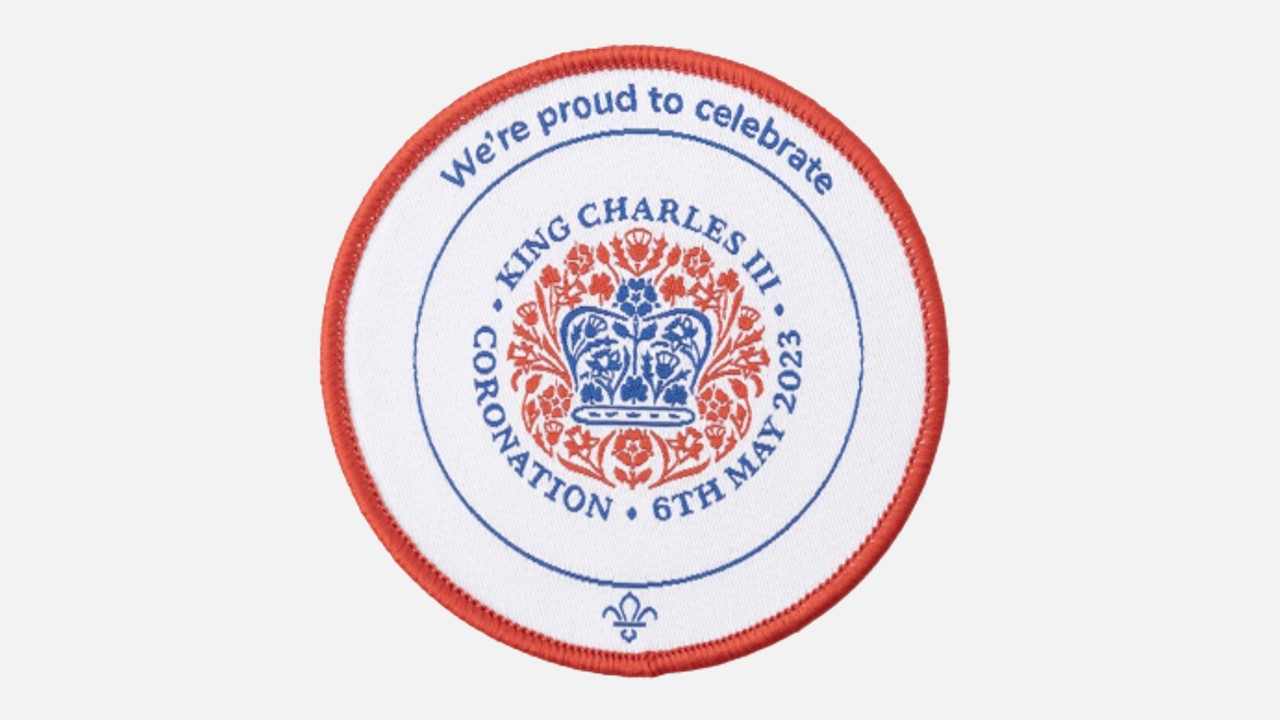Scouts and Coronations: A History of Service (1911-2023)
Scouts have a proud history supporting the coronations of our Kings and Queens. Here are just some of the key moments when Scouts have played their part.
Quick links
- 1911: Plans published for Scouts involvement in building Coronation bonfires for HM King George V
- 1911: Scouts invited to view the Coronation procession of George V
- 4 July 1911: Post Coronation – Royal Rally held for 30,000 Scouts in Windsor Great Park
- 1935: In 4 hours 3,500 London Scouts sold 120,000 programmes for the King George V Jubilee procession
- May 1936: Plans announced for Scouts to design and create wooden village signs to mark the first Scout to be monarch – HM King Edward VIII – to be in place for the Coronation
- July 1936: Edward VIII meets with Baden-Powell to discuss plans for the Coronation. Announcements of ways for Scouts to celebrate: A special good turn – Scouts selected to distribute the official Coronation programme throughout the country – with funds to go to the late Kings’ Jubilee Trust. A Scout rally to be held on the same day throughout the UK
- December 1936: Edward VIII abdicates before his Coronation. His brother would become King George VI and, in turn, preparations begin for his Coronation.
- February 1937: Announcement King George VI has consented to be Scouts Patron. Agreement that Scouts will sell Coronation Souvenir programmes from 28 April. Scouts to wear official sellers’ badge and have collecting boxes.
- April 1937: Final details for the selling of programmes are published. Coronation hymn published. Scout Shops – Coronation souvenirs – shields and pennants.
- May 1937: 1,650 Rover Scouts work with St John’s Ambulance to monitor, support and control crowds. Help erect and dismantle barriers.
In London 7,000 Scouts sell 170,000 programmes and sell out by 7:30am – 597,572 sold across UK.
214 King’s Scouts on duty on special stands by the Palace and Abbey.
125 Rover Scouts help outside Westminster Abbey with cars of special guest and acting as messengers.
Scouts selected to view Coronation procession – a contingent of 1,000 Scouts (630 from UK, and others from across Empire) watch Coronation procession from enclosure on Constitution Hill. - February 1952: HRH Princess Elizabeth becomes HM The Queen upon the death of her father, George VI. Her Coronation is set for 2 June 1952.
- May 1952: An announcement is made: “With the gracious approval of Her Majesty the Queen, the King's Scout Badge will in future be known as the Queen's Scout Badge. In addition, the Queen has been pleased to approve the continuance of the award of the Royal Certificate which will bear a message from Her Majesty to holders of the Queen's Scout Badge.”
- 25 June 1952: Queen agrees to become Scouts Patron, confirmed at AGM July 1952
- January 1953: Early plans for Coronation: Working with The National Trust to host chain of beacons on Coronation night. Scouts to sell programme once again.
- April 1953: Coronation progress certificate launched for Scouts. The Chief Scout and the Committee of the Council have decided that a special Progress Certificate, signed by the Chief Scout, be awarded to each Scout and Senior Scout Patrol which makes progress during Coronation Year.
- April 1953: Launch of Scout coronation souvenir pennant
- May 1953: Coronation Year Adventure Scheme: On HM The Queen's first Christmas Day broadcast the theme of Her Majesty's message was "Adventure." In an effort to encourage this, a friend of Scouting has offered some prizes for the best adventures undertaken in this Coronation Year by First Class Scouts aged 15 and 18 years.
- May/June 1953: Senior Scouts support the Lord Chamberlain’s Office carrying messages during the build up to the Coronation.
- 1 June 1953: 180 Rover Scouts and Senior Scouts on duty overnight staffing temporary police canteens.
- 2 June 1953: Rover Scouts and Queen’s Scouts support Peers entering the Abbey.
4,000 Scouts and volunteers operate 76 programme selling depots throughout the night before the Coronation. A total of 700,000 programmes are sold by Scouts, with funds raised going to King George’s Jubilee Trust.
50 Queen’s Scouts help General Film Distribution Ltd with production of film – A Queen is Crowned and 10 help British Movietone News Cameramen.
20 Queen’s Scouts on Buckingham Palace forecourt help police.
A television is installed at Gilwell Park for Scouts not on duty to watch the coronation.
1,100 Scouts have standing positions along the procession route to support crowds.
1,390 Beacons are lit on the evening of the Coronation, organised by Scouts.
The Chief Scout lights the beacon in Hyde Park. 28 Scouts have seated tickets in Piccadilly (won through a ballot). - 4 June 1953: The (Boy) Scout Association has freedom of Chingford bestowed upon it as part of the borough’s Coronation celebrations.
- 9 June 1953: HRH The Duke of Gloucester (Scouts’ President) hosts Scouts from 17 nations of the Commonwealth at a garden party.
- 14 June 1953: 1,000 people attend a Joint Scout and Guide service at Willesden Synagogue.
- 21 June 1953: 4,000 Scouts and Guides, 50 Cubs and 50 Brownies attend a Joint Scout and Guide thanksgiving Coronation service at Westminster Abbey.
2,000 Scouts and Guides attend a Roman Catholic thanksgiving service at Brompton Oratory. - March 2023: Scouts prepare for the Coronation of HM King Charles III. The Official Scouts Coronation Badge is available for pre-order.
We’re proud to have worked closely with the Royal Household to produce the Coronation badge for HRH King Charles III. It features the official Coronation emblem designed by Sir Jony Ive, along with our Scouts fleur de lis.
The Coronation badge for HRH King Charles III is an Occasional Uniform Badge to be worn until 31 December 2023.
It should be worn on the top left of the uniform top, above the World Membership Badge, Moving on and Joining-in Award. As only one National Occasional Uniform badge should be worn at a time, other Occasional Badges, such as the Queen’s Memorial Badge and Jubilee Badge need to be removed.
